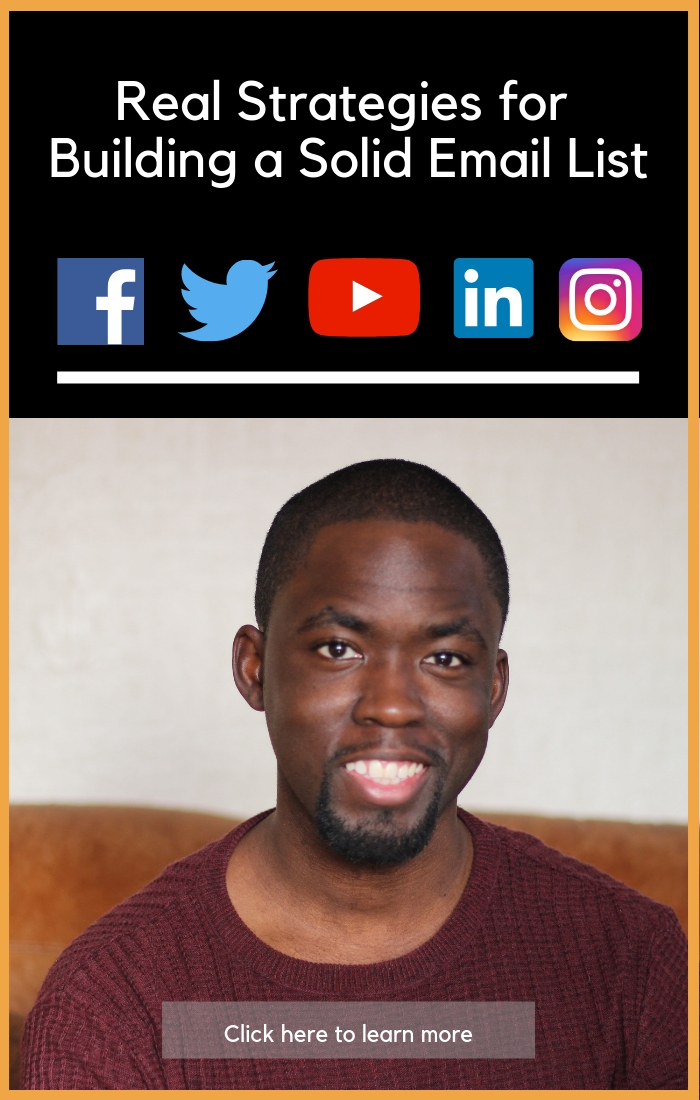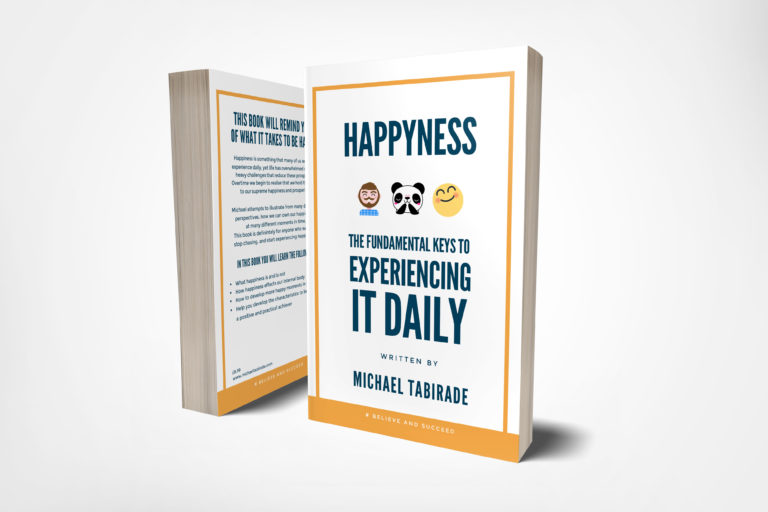Email marketing strategy: How to build an email list
For many personal brands, the biggest barrier they have is knowing what email marketing strategy to employ and how to build an email list. Many people are blinded by the relevance of building an email list, but it’s probably the most important business activity you could perform. If anything you should be aiming to build your email list daily. The reason why many thought leads badge on about content is that valuable content can have a higher chance of converting a reader into a lead. A lead is defined as someone who has shown potential consumerist interest in a specific product or service. In this article, a lead is someone who has opted in for a low barrier to entry offer, in exchange for their email address.
I am writing this article because I believe it is really important to differentiate the difference between content creation and lead generation, and how they should complement each other. In addition, I will highlight some ways in which you can generate leads, some more targeted than others.
In essence, the best way to build your email list is to create an attractive offer that your audience sees as valuable. This can be done via events, social media, website content and paid advertising. Some methods are faster than others, and some methods are cheaper. Regardless there is no right way, just do what makes sense.
Lead magnets

Trying to get sales is not as easy as these gurus make it out to be. Don’t get me wrong, you can get sales, however, how predictable is your method? When you want to shape your income around your business, there needs to be an element of predictability. If you want this, firstly, you need to know your customer’s wants and needs. You need to explore their biggest pains and desires and find a way to best communicate with them. A quick survey or thematic analysis of core problems would quickly help you understand their needs and wants. In addition, educating yourself on your niche will also give you a perspective.
Once you have done you need to develop a smart way to build a community of people you can engage with. This engagement will include, valuable information that is educating, empowering and inspiring, as well as commercial in nature. The most logical way to start this is to be exposed to them in a natural way, whether it is through a Google search, social media paid per click (PPC) advertising, or on Eventbrite.
Here’s the idea
Not everyone is trusting of claims to help them solve a specific problem, so you need to create value that has a low barrier to entry so that they can play around with your trust. The lowest barrier to entry anyone can get is something FREE. Your job, as an entrepreneur is to create a FREE offer, that invites people to become part of your community. This is known as developing a lead magnet. Here are some examples of lead magnets
- Checklists or Templates
- Recommendations
- PDF Report or White Paper
- Presentation or SlideShare
- eBook or audiobook
- Audio files
- Video training
- Video series or mini-course
- Webinar
- Events
Look at what your competitors do

The above list is enough to get you started, however, it is always sensible to see what the market is doing and aim not to do anything too different from them. For example, many digital marketers offer a webinar or video training as a lead magnet, so it would make sense to do what is accepted. Furthermore, think about what lead magnets you have opted in for in the past. Once you have a strong idea, develop your lead magnet. If your lead magnet is digital, you can use the following tools:
- Canva.com
- Camtasia or Quicktime
- WordPress, Udemy or Teachable
- Microsoft 360
- Google Drive
- Smart Phone or DSLR Camera with a stand
- Rhode Mic, Zoom mic or lavalier lapel mic
- A quiet room (well lit)
- Lights/lamps
I could go on, but this is enough to get you set up for developing a strong lead magnet. Now I’m going to go over some ways to build your email with the following methods.
Autoresponders

You need to be able to collect, categorise, and send email blasts and automation to your community. This is done via the help of an autoresponder. There are many types of autoresponder such as MailChimp, Aweber, Infusion Soft, Sendlane etc. All autoresponders have a paid monthly subscription for use, and is based on a quota of emails you send per month and/or number of email contacts you have. Prices can range from £10 – £150+ per month depending on your email list. I currently use MailChimp, however, I am very likely to change in the future based on the developments of my list and my business. It was convenient at the time because MailChimp’s lead magnet is a free subscription to use their autoresponder until you have a certain amount of leads or send a certain amount of emails a month.
Pop-ups on your website

It’s quite clear that you need a website if you are thinking long-term. Social media or paid ads will never be a substitute for high-quality content produced on a platform you own. You need to develop content frequently in order to make use of the website. This content needs to be search engine optimised (SEO) so that it draws natural traffic to it when people search for specific keywords. The aim of the game is to provide high-quality content that is aligned with Google’s policies and get people to see your pop-up offering a sensible lead magnet. This lead magnet should be congruent to the posts on your site, as well as helping solve the users core problem.
The pop-up should be simple and effective. Here is an example of what your pop-up could say:
FREE Training that reveals how to increase your property sales by 200% in 90 days
If you don’t have a bold claim (that is true), then stick to what the training will do. Focus on desires i.e. in this example the desires clearly are “increasing sales” and “90 days” (doing it in a relatively quick timescale).
In addition, you want to ask for very minimal information in exchange for this lead magnet. It does depend on the industry, however, I always encourage email as a minimum, and maybe their first name. The more information you ask for the less leads you get, but they may be more quality leads.
Forms on your website
As well as pop-ups, you may decide to develop a call-to-action at the end of some of your posts. A call-to-action is a phrase that tells readers what to do in order to achieve a specific result, for example: click here to receive your full training on how to become a profitable personal brand! It’s clear and to the point. You can easily add a form by going to your autoresponder dashboard and copying the embed code which you would put at the end of the post. This is a simple strategy to employ, but should not be used on every post; it may seem like you are selling too much!
Events

The quickest way to form a relationship with your audience is via events. When face-to-face they can judge you within seconds, and it is easier to build rapport with them. If you are marketing an event on Eventbrite, it would make sense to integrate your autoresponder to your event. In English, this means that everytime someone registers for a ticket, they sign up to your autoresponder. In light of GDPR, it would make sense to also add a checkbox at registration to confirm they are happy to receive updates for upcoming events or marketing on products and services that may benefit them in the future. I recently did this with my business partner, and we received 70 emails to our list in 2 weeks. These 70 people also answered targeted questions that helped us understand our market better. What’s even better, is that you can film your event and turn it into macro and micro-content, placed on other platforms. The possibilities are endless.
Joint Ventures
You can also get emails by doing joint ventures with people who are “on your level.” Whether you embark on a staged or online event, collaborations are a great way to build your email list. This can only happen when your audience sees the value the other party brings, which supports any edification used. Think about opportunities where you can work with someone to provide some great content, with the eventual aim of growing your email list.
Facebook Ads

If you can’t be bothered to do any of the methods suggested, then you can always pay for leads. It does require work in terms of understanding who you’re targeting, but setting up an Ad isn’t as difficult as it seems. If you want to learn how to do it for free, check out Facebook Blueprint online and enroll in Facebook’s free training. A great way to target the right people is to use your website’s pixel data (data generated from activity on your website). This means you will be able to target poeple who have been to your website or target people who “Look-a-like” that audience. You can do the same thing using your Instagram profile, Facebook Page, and videos published. There are so many variations outside the scope of this article but just know you have options. I would start by targeting those who come to your website, and create a look-a-like audience of those people and split test the Ads. This would however insinuate that you would have developed content in order to draw people to your website in the first place!
Facebook Objectives
When creating a Facebook Ad, you need to choose an objective such as:
- Engagement
- Video views
- Conversion
- Lead Forms
In the past, different objectives got different results, for example, engagement ads may have been a great solution for converting people to opt-in to an offer and vice versa. Recently, Facebook’s algorithm has got very smart in identifying who is likely to “engage” with your Ad, and who is likely to turn into a “lead.” On that premise, it would be sensible to use the objectives that fit your end goal. However, be open to testing other closely related objectives. In this instance, I would create a lead form ad to generate leads. You can use a conversion Ad, however, I think lead forms have worked just as well for me. When creating an Ad you need to think about:
- The media being used i.e. image or video
- The location
- The interest and/or event used for targeting
- Location
- Budget and schedule
- The copy (written text)
- The headlines
- Landing pages and it’s components
Please read Facebook’s Ad policy as well as their Facebook Business Help site for more detailed information! It is super helpful and has helped me a lot.
Conclusion
If you want to build your email list, then one of these strategies will work really well for you. The key message here is that you need to be proactive, because if you are not, then your list will not grow. It is not about the size of the list, it is about the quality of the list. Focus on building a list of quality leads, who buy into you, but also believe that you are the one to help them solve a specific problem of desire. This is where I go: “If you want to learn more about how you can do this, and other wide business development strategies, click here.”









8 Comments
Comments are closed.